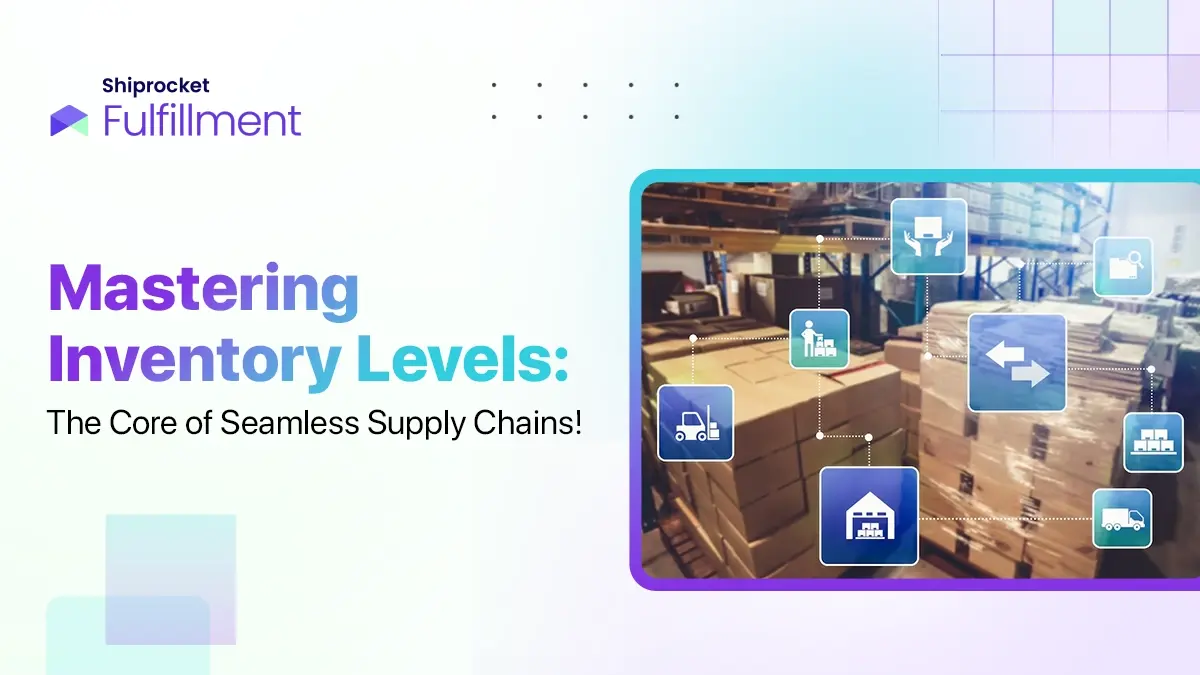Mastering distribution logistics is crucial for efficient supply chain management in today’s fast-paced and interconnected business landscape. Distribution logistics encompasses the comprehensive planning, management, and seamless flow of goods, information, and data throughout the supply chain. By optimising the movement and storage of products, distribution logistics ensures timely delivery and customer satisfaction, thereby enhancing the overall effectiveness of the supply chain.

Definition and Significance of Distribution Logistics in Different Industries
Distribution logistics refers to the processes and procedures that efficiently move goods from the warehouse to the end customer in various industries. It plays a critical role in the supply chain, particularly in the eCommerce sector, ensuring consistent delivery and meeting customer expectations.
The significance of distribution logistics lies in its ability to optimise order fulfillment services and ensure successful delivery. It encompasses various steps, including inventory management, storage optimisation, transportation, and order fulfillment. Distribution logistics enables businesses to streamline operations, reduce costs, and enhance customer satisfaction.
It is a vital link in the supply chain in different industries, connecting manufacturers, suppliers, retailers, and customers. Whether it’s the distribution of consumer goods, industrial equipment, or healthcare products, efficient logistics operations are crucial for timely delivery and meeting market demands.
Responsibilities of a Sales Logistician in Managing Logistics Sales
A sales logistician plays a vital role in logistics sales by effectively coordinating and optimising the transportation, distribution, and delivery of goods and services to clients. Their responsibilities encompass a range of key tasks that ensure smooth logistics operations and enhance customer satisfaction.
They are responsible for designing and implementing effective strategies to sell logistics solutions. It involves identifying potential clients, understanding their requirements, and presenting tailored logistics solutions that meet their needs.
They manage the coordination of shipments and distribution of goods. They oversee the inspection of goods, track shipments, manage inventory levels, and communicate with customers and third-party service providers. It ensures the efficient movement of goods and timely delivery to clients.
They also negotiate and collaborate with suppliers, manufacturers, retailers, and consumers. Another critical aspect of their role is resolving shipment issues and addressing customer complaints. They proactively identify and mitigate potential challenges, ensuring a seamless client experience. Furthermore, they analyse data and evaluate the supply chain.
Direct vs Indirect Distribution
The table below highlights the difference between direct and indirect distribution logistics.
| Aspect | Direct Distribution Logistics | Indirect Distribution Logistics |
| Definition | In direct distribution logistics, consumers purchase goods directly from the manufacturer without intermediaries involved. | Indirect distribution logistics involve moving products from the manufacturer to the end consumer through various intermediaries, such as wholesalers, distributors, and retailers. |
| Channel Structure | Direct distribution channels bypass intermediaries and have a shorter supply chain. | Indirect distribution channels include multiple intermediaries, resulting in a longer and more complex supply chain. |
| Control | With direct distribution, the manufacturer has greater control over the entire distribution process, including pricing, branding, and customer experience. | In indirect distribution, the manufacturer has less control as intermediaries play a role in pricing, branding, and customer interactions. |
| Cost | Direct distribution logistics may require higher upfront costs for establishing and maintaining distribution infrastructure, including logistics teams and transport vehicles. | Indirect distribution logistics may involve lower upfront costs as manufacturers leverage existing distribution networks provided by intermediaries. |
| Flexibility | Direct distribution allows manufacturers to respond quickly to market changes, adapt pricing strategies, and customise customer experiences. | Indirect distribution may offer less flexibility as manufacturers have to align with the policies and procedures of intermediaries. |
| Customer Interaction | Direct distribution enables direct communication between manufacturers and customers, fostering stronger relationships and a better understanding of customer needs. | Indirect distribution logistics may limit direct customer interaction, relying on intermediaries to handle customer relationships. |
| Market Reach | Direct distribution can benefit niche products or specialised markets, allowing manufacturers to effectively target specific customer segments. | Indirect distribution can provide a broader market reach by leveraging the established networks and reach of intermediaries, targeting a wider customer base. |
| Speed of Delivery | It can offer faster delivery times as the supply chain is shorter and involves fewer intermediaries. | It may involve longer delivery times due to the involvement of multiple intermediaries in the distribution process. |
| Inventory Management | It enables better control over inventory management, as manufacturers have direct visibility and can optimise stock levels based on customer demand. | It may result in more complex inventory management as manufacturers rely on intermediaries for stockholding and order fulfilment. |
| Data and Analytics | Direct distribution allows manufacturers to collect and analyse customer data directly, gaining valuable insights for product improvement and targeted marketing. | Indirect distribution may limit access to customer data, as intermediaries may have control over customer information and insights. |
| Competition | Direct distribution logistics can help manufacturers differentiate their products by offering unique experiences and personalised services. | It may expose products to more competition within the distribution network, requiring stronger branding and marketing efforts. |
Impact of COVID-19 on Distribution
The COVID-19 pandemic has significantly impacted distribution logistics, causing disruptions and challenges across the supply chain. The outbreak triggered a global wave of lockdowns, travel restrictions, and shelter-in-place orders, leading to a dramatic shift in consumer demand. While some industries experienced a decline in demand, others faced a surge, creating a complex logistics landscape. Companies have had to strategically adjust their supply chains to navigate these changes.
Border closures and reduced transportation capacities posed major hurdles, making it difficult to move goods efficiently. Moreover, disruptions in manufacturing and distribution centres disrupted the flow of goods, leading to delays and inventory shortages.
Automation and digitisation have played a crucial role in streamlining processes, optimising inventory management, and enabling real-time tracking of shipments. Additionally, companies have focused on building resilience in their supply chains, diversifying sourcing strategies, and establishing closer collaborations with suppliers and logistics partners.
The pandemic has also highlighted the importance of agility and adaptability in distribution logistics. Companies that quickly responded to changing market dynamics and implemented flexible strategies were better positioned to navigate the crisis successfully.
For instance, some organisations shifted their focus from traditional brick-and-mortar retail to eCommerce channels, leveraging existing infrastructure or establishing new distribution centres to meet the rising demand for online shopping.
Tips for Improving Distribution Logistics
Here are some tips to improve distribution logistics:
- Embrace advanced technologies: In today’s evolving supply chain landscape, it’s crucial to integrate advanced technologies into your distribution logistics. Automation, robotics, and augmented reality (AR) can enhance efficiency and accuracy in order fulfillment and inventory management.
- Streamline planning and decision-making: Integration of planning and decision-making processes is key to optimising your distribution network. Adopting a network model incorporating factors like procurement, storage facilities, and product delivery can enhance coordination and minimise disruptions.
- Adapt to post-covid-19 realities: The COVID-19 pandemic has brought numerous challenges to distribution logistics. Explore alternative transportation routes and partnerships to overcome operational and border restrictions. Flexibility and agility in adapting to changing circumstances will be vital for success.
- Optimise warehouse management: Efficient warehouse management is crucial for seamless distribution logistics. Implementing strategies like value relations, warehouse management systems, and efficient transportation systems can help optimise inventory control, reduce lead times, and improve customer satisfaction.
- Enhance supply chain talent management: Attracting and retaining top supply chain talent remains challenging. Focus on creating a positive work environment, offering growth opportunities, and addressing employees’ evolving needs and expectations. It will foster loyalty and ensure the availability of skilled professionals.
- Prioritise customer satisfaction: The ultimate goal of distribution logistics is to satisfy customers. You can strengthen customer relationships and gain a competitive edge by reducing order-to-delivery lead times, enhancing communication channels, and improving service levels.
Conclusion
Efficient supply chain management relies heavily on the mastery of distribution logistics. Businesses can achieve streamlined operations, reduced costs, and improved customer satisfaction by strategically planning and managing the flow of goods and information. With an integrated and optimised distribution logistics system, businesses can enhance their competitive advantage and adapt to the ever-evolving demands of the market. Distribution logistics strategies enable businesses to pave the way for efficient and successful supply chain management in the dynamic landscape of today’s global marketplace.
Transporting goods from a manufacturing facility to various retail stores across different regions while ensuring timely delivery and efficient supply chain management is an example of distribution logistics.
The types of distribution in logistics include direct distribution, where products are delivered directly from the manufacturer to the end customer; indirect distribution, where products are delivered through intermediaries such as wholesalers or retailers; and reverse distribution, which involves the return of products from customers back to the manufacturer or a designated location.
The functions of distribution logistics encompass activities such as inventory management, order processing, warehousing, transportation, packaging, and risk management. These functions aim to ensure the smooth flow of goods from the point of origin to the end customer, optimising efficiency and customer satisfaction.









